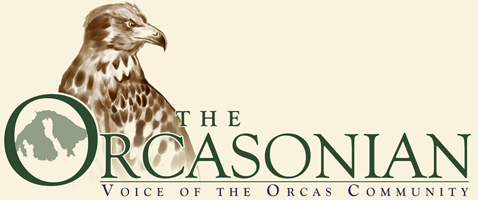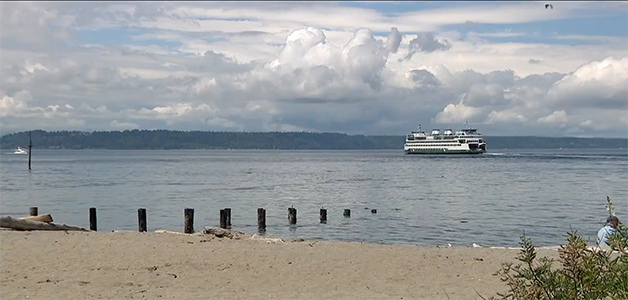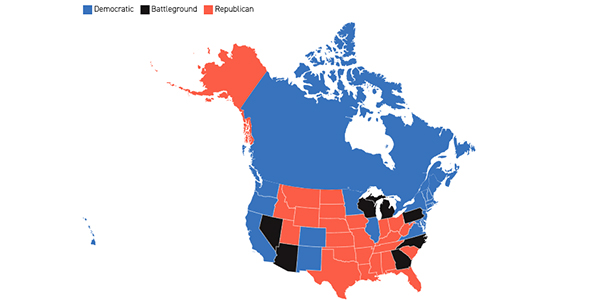By James Wolf
My guest column posted in Orcas Issues on Sept. 26 pointed out the Charter Review Commission’s lack of analysis leading to their propositions to amend our county charter. I addressed the commission’s “Findings,” which state that having six council members resulted in greater expense than originally anticipated. The commission used a newspaper article and an Auditor’s report comparing two discreet years (2006 and 2011) as a basis for their statement. I noted that rather than a snapshot look a better analysis would have been to compare five years under the prior three-member system to five years under the current system. This will show trends, will smooth out one-time fluctuations and will give a distortion-free view of reality. To that end, I’ve done just that.
To gather the data I went to the state auditor’s website where it’s readily available (you can find it there also, if you wish). I chose to compare years 2001 to 2005 under the old three-member Board of County Commissioners to 2006 to 2010 under the current six part-time County Council members plus County Administrator. In addition, I focused on the cost center called “General Government,” which includes Commissioner, Council and Administrative expenses and excludes things like Law, Fire and Transportation. Note: 2006 had only three council members for most of the year, but since it includes some costs, like election expenses, that could be considered “six-member charges” I included it in the six-member numbers even though there weren’t six actually seated until December of 2006.
So what does the data say? As you might expect, government cost more in 2010 than it did in 2001. Of course very few things cost the same as they did in 2001, let alone cost less. So a straight number for number comparison is misleading. What should be done is to compare the rate of increase (how much did it go up one year to the next) under the old three-commissioner system versus the current system. Here are the numbers:
Overall, the average year-over-year rate of increase was 4.6%. This is slightly higher than would be expected. A simple baseline would be to add the rate of inflation (as measured by the Consumer Price Index) with the rate of population growth. For the period 2001 to 2010, the annual year-over-year inflation rate was 2.24% and the annual year-over-year rate of population growth was 1.27%. Therefore a reasonable baseline would be 3.51%, so the annual increase of the cost of government was about one percent higher than that. But that’s not the whole story.
For the years under the old three-commissioner system the rate of increase was 5.3%, almost two percentage points higher than baseline, while under the current system, the rate fell to 4.0%. So it looks like this:
Total annual rate of increase 2001 to 2010 – 4.6%
Prior structure 2001 to 2005 – 5.3%
Current structure 2006 to 2010 – 4.0%
What’s this mean? Does government cost more now than in 2001? Of course, everyone would have anticipated that. Are costs wildly out of control? Not really, but we can do better. What it actually shows is that according to the data and reasonable analysis, the county’s ability to control the rate of growth has shown to be much better under the current six part-time County Council members plus a professional County Administrator. For us, that means the most cost-effective choice is to reject the Charter Review Commission’s Propositions 1 and 2.
James Wolf
**If you are reading theOrcasonian for free, thank your fellow islanders. If you would like to support theOrcasonian CLICK HERE to set your modestly-priced, voluntary subscription. Otherwise, no worries; we’re happy to share with you.**








I love reading James Wolf who is one of the few independents in the country that does good analysis without, as far as I can see, an “agenda”. Unfortunately, in this case adding CPI and population growth rates together to create baselines is comparing two dissimilar statistics. One does not necessarily track the other, especially when looking a county revenues and expenses. Secondly, county budgets are all over the place, and looking at two periods of five years each just to accommodate the electoral periods of the Council without looking at the causes for incremental expense, is again comparing apples to oranges.
Finally, neither of the above is sufficient cause to dismiss the entirety of Propositions One and Two.
Steve Garrison
Finance Subcommittee, CRC
One huge factor not addressed is that during the earlier 5 year sample county revenues were booming with the real estate bubble, construction boom and healthy tourism during that time. The wonder of it is that our Commission at that time increased spending as little as they did. Since then the Council has presided over a time of collapsing revenue from the real estate bust, collapse of construction and slowing tourism. The wonder of this era is that county spending has increased at all during a time of slumping revenues, hence the serial tax increases of the last few years. Every other Washington State County I looked at for this time frame actually decreased spending, some by significant percentages. It is impossible to say if a Commission structure would have done better through these hard times, but that does not make our current structure, or current Council members, models of fiscal sanity.
Yes BUT…can you tell us how cost effective those commissions and commissioners have been?
Yes BUT…can you tell us how cost effective those commissions and commissioners have been?